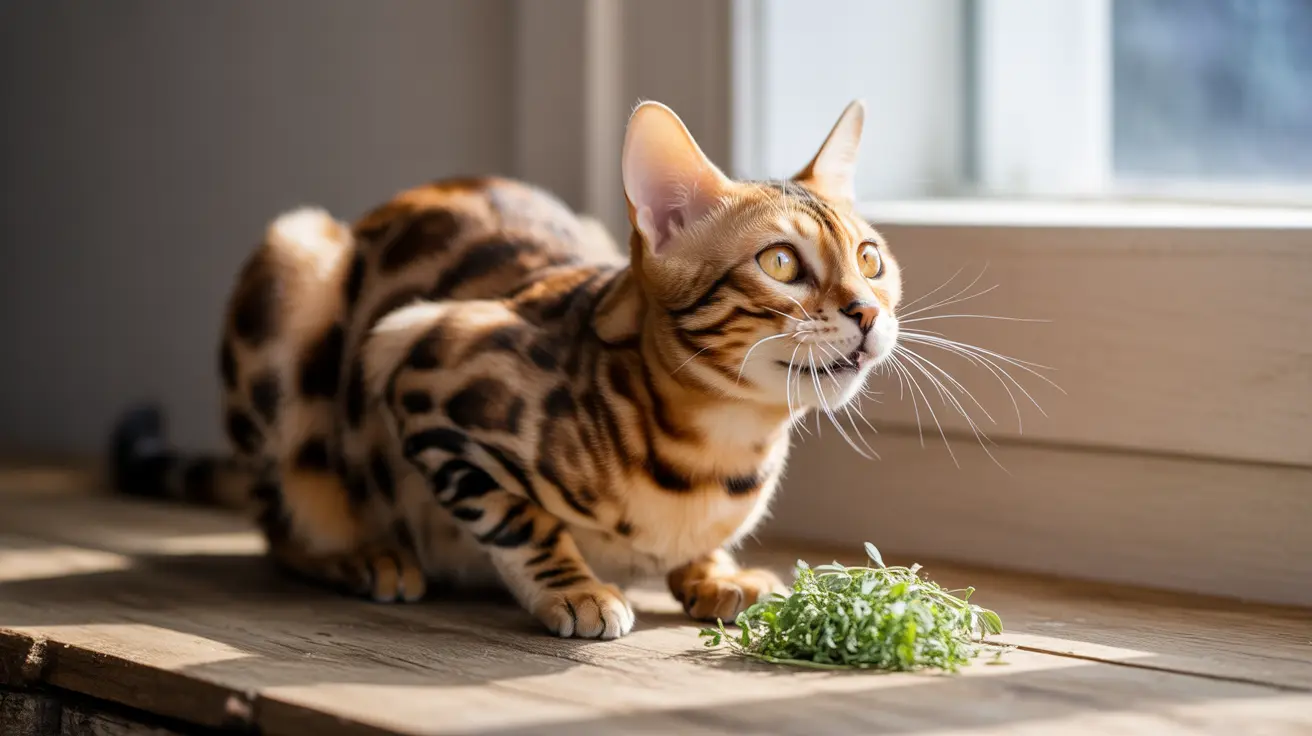The Remarkable Range of Feline Olfaction
Cats can detect catnip from an astonishing distance of 1.5 to 4 miles away, depending on environmental conditions. This incredible range is made possible by their highly developed olfactory system, which contains approximately 200 million scent receptors - compared to just 6 million in humans.
Environmental factors such as wind direction, humidity levels, and the concentration of catnip's active compounds can all affect how far cats can detect this enticing herb. On particularly favorable days, cats may pick up the scent from even greater distances.
The Science Behind Cats' Catnip Detection
Cats possess a specialized scent-detection system that includes the vomeronasal organ (also known as Jacobson's organ), located in the roof of their mouth. This unique organ allows cats to analyze scents with remarkable precision, detecting catnip concentrations as low as one part per billion in the air.
When cats encounter catnip's scent, they often display the Flehmen response - a distinctive behavior where they open their mouth and curl their upper lip to draw the scent over their vomeronasal organ for deeper analysis.
Understanding Catnip's Effects
The active compound in catnip, nepetalactone, triggers a powerful response in susceptible cats. Approximately two-thirds of cats inherit the genetic sensitivity to catnip, with effects typically appearing between 6 months to 1 year of age.
Once exposed, cats may exhibit various behaviors including rolling, head rubbing, purring, and increased playfulness. These effects usually last 5-15 minutes, followed by a refractory period during which the cat temporarily becomes immune to catnip's effects.
Safe Usage and Best Practices
While cats can detect catnip from impressive distances, responsible use is important. A small amount (about one tablespoon of dried catnip) is sufficient for enrichment activities. Fresh catnip is more potent than dried varieties, so adjust quantities accordingly.
Store catnip in airtight containers to maintain potency, and monitor your cat's reaction to ensure they don't become overstimulated. While catnip is non-addictive and generally safe, excessive consumption may cause mild digestive upset.
Frequently Asked Questions
How far away can cats smell catnip, and what affects their ability to detect it?
Cats can smell catnip from 1.5 to 4 miles away. Their detection ability is influenced by wind conditions, humidity, air temperature, and the concentration of nepetalactone in the air.
Why do some cats react to catnip while others do not?
Sensitivity to catnip is hereditary, with about 66% of cats possessing the gene that makes them responsive. This sensitivity typically develops between 6 months and 1 year of age.
What behaviors do cats typically show when exposed to catnip, and how long do these effects last?
Common behaviors include rolling, rubbing, purring, increased playfulness, and sometimes zoomies. Effects typically last 5-15 minutes, followed by a refractory period of 30 minutes to several hours.
How does a cat's sense of smell work to detect catnip and other scents?
Cats have 200 million scent receptors and a specialized vomeronasal organ that allows them to detect and analyze scents with incredible precision, including catnip concentrations as low as one part per billion.
Is catnip safe for cats, and how much catnip should I give to my pet?
Catnip is generally safe and non-addictive. A tablespoon of dried catnip or a small pinch of fresh catnip per session is recommended. While overconsumption may cause mild stomach upset, serious adverse effects are rare.






